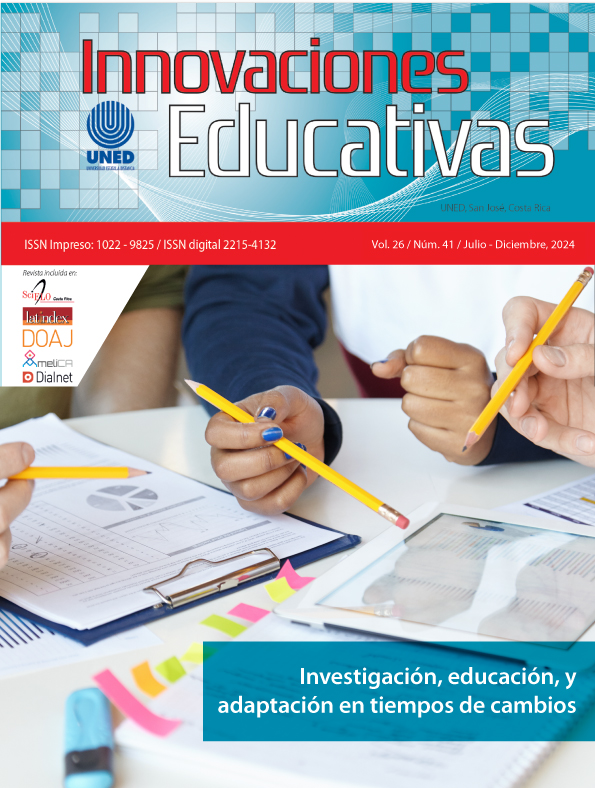Jamovi, the technological tool for analyzing and interpreting data in civil engineering projects
DOI:
https://doi.org/10.22458/ie.v26i41.5145Keywords:
Jamovi, Data analysis, statistics, higher education, civil engineering, softwareAbstract
Advances in information technology have led to an increased use of statistics as a tool for analyzing data in various academic fields. Statistics has become a primary requirement in any curriculum because of its wide range of applications in the industry and for research purposes. Higher education programs therefore need to prepare graduates with both theoretical and applied statistical knowledge. There are several statistical technology tools for data analysis, each with its own advantages and disadvantages. This article examines Jamovi, a statistical software that is versatile, free and open source, and the impact of this tool on the teaching of statistics for civil engineering. The study involved 40 students of the Masters in Physical Planning of Civil Works of the Universidad Estatal del Sur de Manabí, and was carried out during the months of November to December 2023. The study applied an analytical observational methodology with a quantitative design, using descriptive and inferential statistical techniques. The results showed a better performance of the students who used Jamovi compared to those who used MS Excel. This was supported by descriptive analysis and hypothesis testing. The results led to the conclusion that Jamovi facilitated the teaching and learning process of statistics in civil engineering.
References
Azofeifa, C. y García, J. (2023). Formación bimodal universitaria de profesionales en Ciencias del Movimiento Humano: un aporte desde el modelo de aprendizaje invertido con el apoyo de las Tecnologías de la Información y la Comunicación (TIC). Innovaciones Educativas, 25(38), 232–245.
De la Torre, M., Junco, D., Marrero, M., y Rodríguez, I. (2023). Software Jamovi en la docencia de la asignatura Metodología de la Investigación. ECIMED. Editorial de Ciencias Médicas, 37(4), 1–8.
Elousa, P. y Egaña, M. (2020). Psicometría Aplicada: Guía para el análisis de datos y escalas con Jamovi. Servicio de Publicaciones de la Universidad del País Vasco Euskal Herriko Unibertsitateko Argitalpen Zerbitzua. http://hdl.handle.net/10810/43054
Fernández-Lizana, M. (2020). Advantages of R as a tool for data Analysis and Visualization in Social Sciences. Revista Científica de La UCSA, 7(2), 97–111. https://doi.org/10.18004/ucsa/2409-8752/2020.007.02.097
Gamboa, E. (2019). Libro Excel Escomde como para medir la competencia de dirección en Educación. Revista Boletín REDIPE, 8(3), 149–184. https://revista.redipe.org/index.php/1/article/view/708/658
Intriago, Y., Vergara, J. y López, R. (2023). Uso de los recursos didácticos, desde la analítica de aprendizaje en las transformaciones de la enseñanza de las matemáticas en la geometría. Juornal Scientific MQR Investigar, 7(3), 2278–2296. https://doi.org/10.56048/MQR20225.7.3.2023
Johnson, R. y Kuby, P. (2012). Estadística Elemental I (11a. ed.). CENGAGE Learning Editores.
Lino, V., Barberán, J., López, R. y Gómez, V. (2023). Analítica del aprendizaje sustentada en el Phet Simulations como medio de enseñanza en la asignatura de Física. Journal Scientific MQRInvestigar, 7(3), 2297–2322. https://doi.org/10.56048/MQR20225.7.3.2023.2297-2322
Metaute, P., Florez, G., Rúgeles, P. y Castaño, D. (2018). The dynamization of current pedagogical strategies: A need applicable to the teaching and learning processes of engineering students of the 21st century. Revista Lasallista de Investigacion, 15(1), 46–56. https://doi.org/10.22507/rli.v15n1a4
Navarro, D. y Foxcroft, D. (2019). Learning statistics with Jamovi: a tutorial for psychology students and other beginners [Version 0.70]. https://doi.org/10.24384/hgc3-7p15
Ortiz, W., Ortega, W., Valencia, L., González, Á. y Gamarra, S. (2021). LA EDUCACIÓN ESTADÍSTICA DEL INGENIERO: RETO DE LA EDUCACIÓN SUPERIOR. Revista Universidad y Sociedad, 13(5), 307–318.
Pinto, J., Tauber, L., Zapata-cardona, L., Albert, A., Ruiz, B., Mafokozi, J., Autónoma, U., México, D. Y. y Nacional, U. (2017). Alfabetización estadística en educación superior. Acta Atinoamerica de Matemática Educativa, 227–235.
Ramírez, A., y Polack, A. (2019). Estadística inferencial. Elección de una prueba estadística no paramétrica en investigación científica. Horizontes de La Ciencia, 10(19), 191–208. https://doi.org/10.26490/uncp.horizonteciencia.2020.19.597
Rivadeneira, F. (2021). GeoGebra como recurso didáctico en la enseñanza de las Distribuciones Probabilísticas. Una experiencia de aula. Unión - Revista Iberoamericana De Educación Matemática, 17(63), 1–11. https://www.revistaunion.org/index.php/UNION/article/view/469
Roque, R. (2022). El software estadístico en la docencia y la investigación. Revista Realidades Educativas Entrelazadas, 1(1), 18–21.
Şahin, M. y Aybek, E. (2020). Jamovi: An Easy to Use Statistical Software for the Social Scientists. International Journal of Assessment Tools in Education, 6(4), 670–692. https://doi.org/10.21449/ijate.661803
Sánchez, A. (2019). Uso de programas estadísticos libres para el análisis de datos: Jamovi, Jasp y R. Revista Perspectiva, 20(1), 112–114. https://doi.org/10.33198/rpe.v20i1.627
Santabárbara, J. y Lasheras, I. (2020). Docencia de Bioestadística en Medicina con software gratuito jamovi_ una ventana de oportunidad. Revista Española de Educación Médica, 1(1), 9–10. https://doi.org/10.6018/edumed.421421
Toapanta, M. G., Pérez, M. V., y Lema, J. G. (2018). Las competencias para el aprendizaje de la estadística en los estudiantes de educación superior. Revista Científico -Educacional de La Provincia Granma, 14(1), 253–266. https://dialnet.unirioja.es/servlet/articulo?codigo=6759688
Torrachi, E., Córdova, A., Chiriboga, G. y Villavicencio, E. (2019). Estrategia de análisis de datos (Parte 1): Creación de bases de datos para investigaciones en ciencias de la salud. Revista OACTIVA UC Cuenca, 4(2), 13–20.
Véliz, V. (2018). Calidad en la Educación Superior. Caso Ecuador. Atenas Revista Científico Pedagógica, 1(41), 165–180. https://atenas.umcc.cu/index.php/atenas/article/view/165
Downloads
Published
How to Cite
Issue
Section
License
Copyright (c) 2024 Innovaciones Educativas

This work is licensed under a Creative Commons Attribution-NonCommercial-NoDerivatives 4.0 International License.

